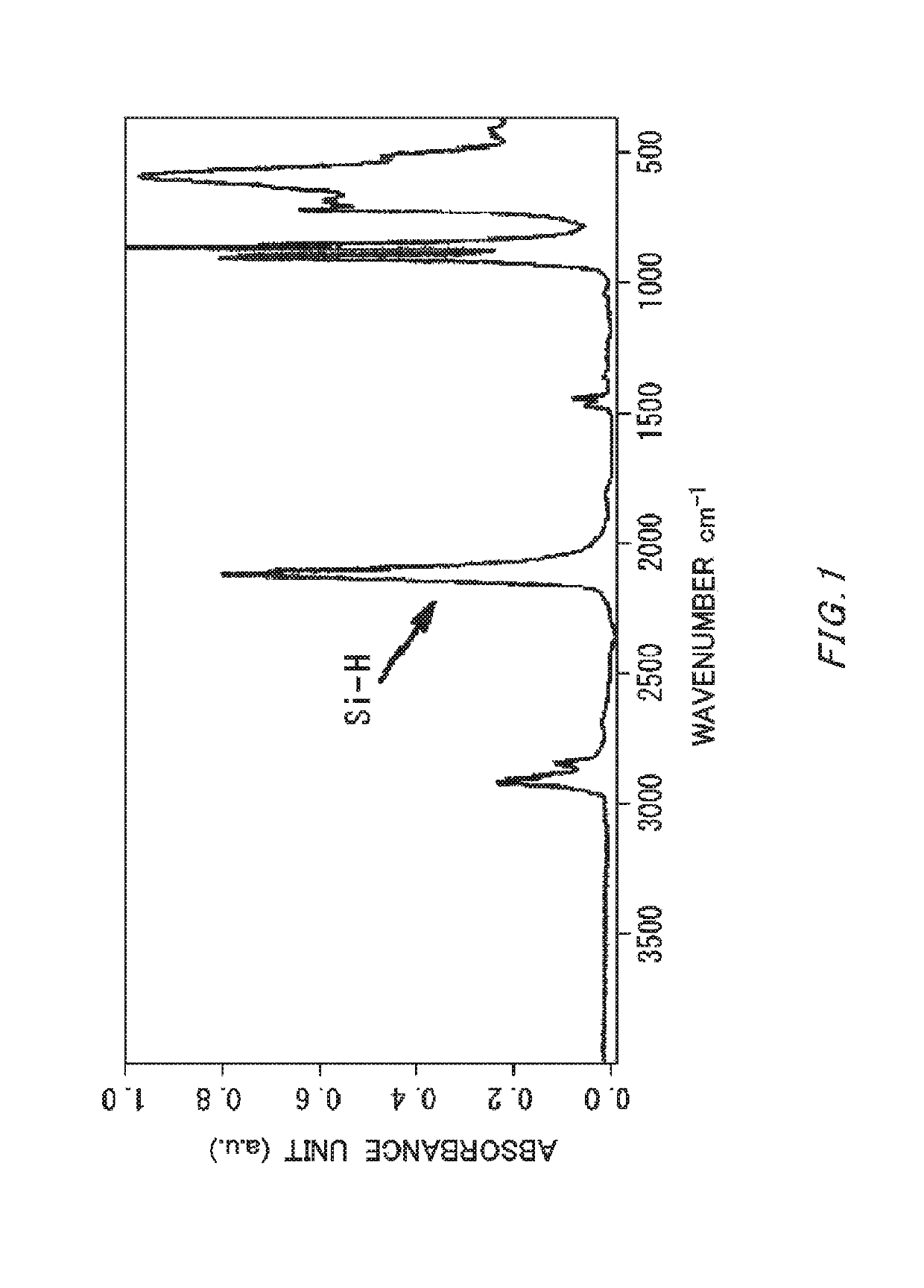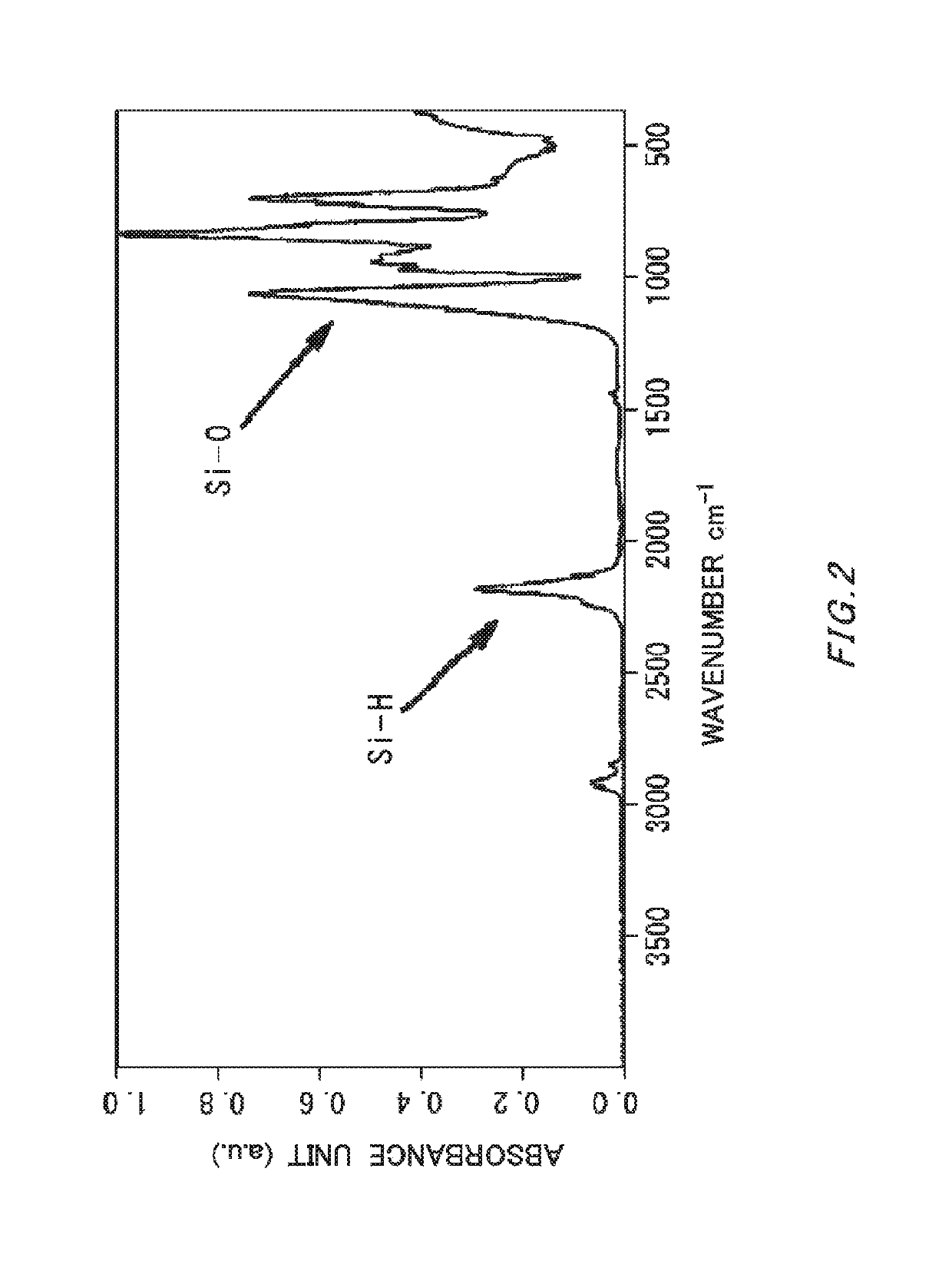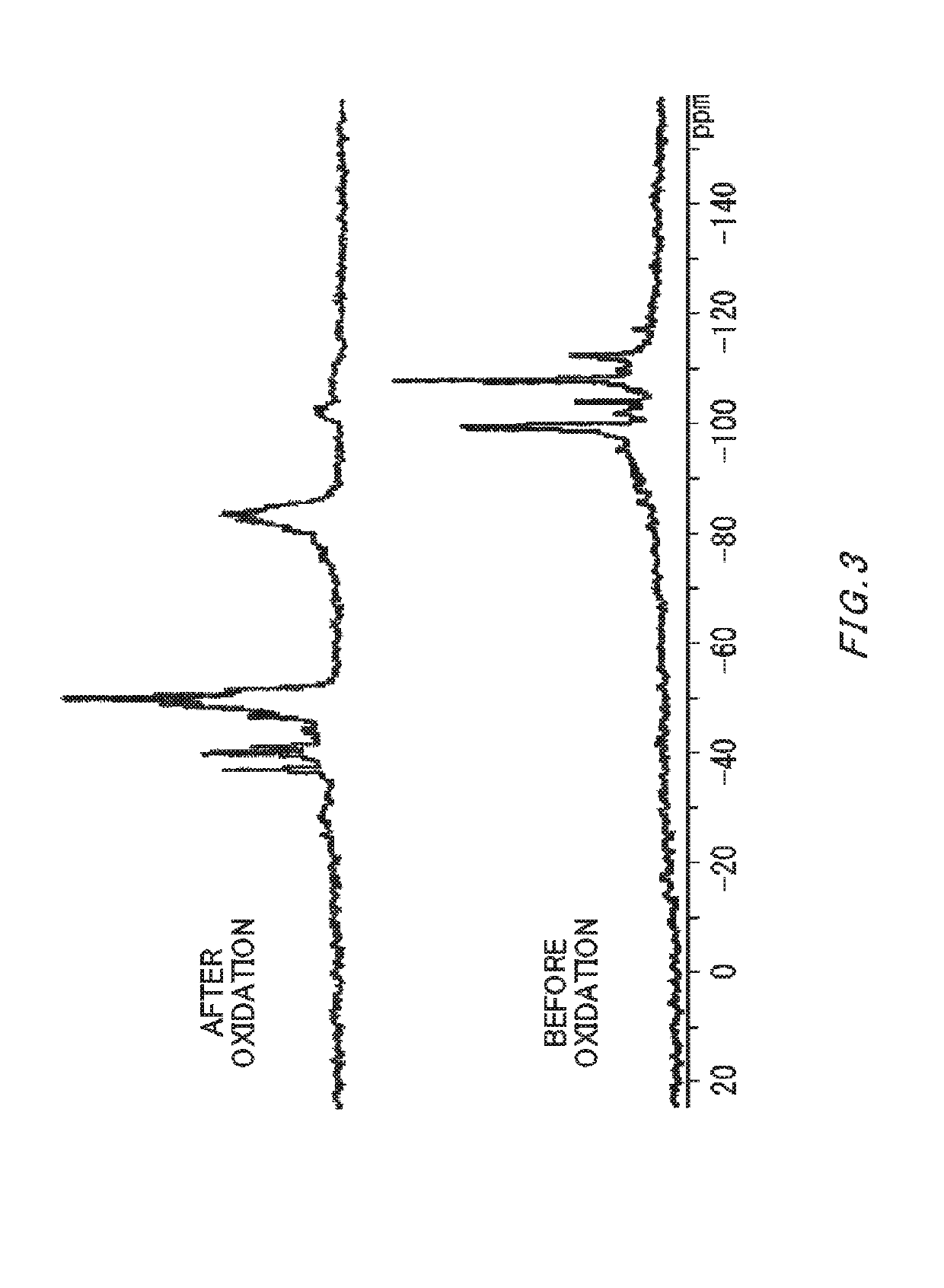Method of producing silicon hydride oxide-containing solvent
a technology of silicon hydride oxide and solvent, which is applied in the direction of silicon oxides, metal/metal-oxide/metal-hydroxide catalysts, physical/chemical process catalysts, etc., can solve the problems of difficult handling of raw materials and gas, and achieve the effects of low oxidation purity, difficult oxidation of silane compounds, and considerable damage to substrates
- Summary
- Abstract
- Description
- Claims
- Application Information
AI Technical Summary
Benefits of technology
Problems solved by technology
Method used
Image
Examples
synthesis example 1
Synthesis of Decachlorocyclopentasilane
[0056]In nitrogen atmosphere, decaphenylcyclopentasilane (500.0 g) and cyclohexane (453.7 g) were put into a 2 L-reaction flask as a solvent. After aluminum chloride AlCl3 (14.7 g) was added to it, the temperature of the resultant mixture was raised to room temperature in a water bath. A hydrogen chloride HCL gas was blown on it for 8 hours. Thereafter, after pressure reduction and pressure recovery by means of nitrogen were repeated ten times to remove hydrogen chloride, the resultant mixture was filtered using a membrane filter; thereby, a cyclohexane solution of decachlorocyclopentasilane (1099.5 g) was obtained.
synthesis example 2
Synthesis of Cyclopentasilane
[0057]Solvent removal was performed on the cyclohexane solution of decachlorocyclopentasilane (1099.5 g) obtained in Synthesis Example 1, and thereafter the resultant mixture was distilled; thereby, decachlorocyclopentasilane (268.56 g) from which cyclohexylbenzene was removed was obtained. Cyclohexane (814.5 g) was added to and dissolved in it, and then the resultant fixture was filtered using a membrane filter, and rinsed using cyclohexane (50 g); thereby, a cyclohexane solution of high-purity decachlorocyclopentasilane (1100.6 g) was obtained. This was put into a 2 L-reaction flask in argon atmosphere, and at 0 to 10° C., a diethyl ether ET2O (269.6 g) solution of hydrogenated aluminum lithium LiA1H4 (57.5 g) was dripped over 2 hours. After the resultant mixture was agitated at room temperature for 1 hour, at 0 to 10° C., ion-exchanged water (592.7 g) was dripped onto the reaction solution over 1 hour. After being agitated and allowed to stand still, ...
synthesis example 3
Synthesis of Rh Black
[0058]In nitrogen atmosphere, a rhodium chloride n hydrate (1.00 g), ammonium carbonate (0.48 g) and ion-exchanged water (482 ml) were put into a 1-L reaction flask. Then, the temperature was raised from room temperature to 90° C. over 30 minutes. A hydrazine n hydrate (9.65 ml) was added and the resultant mixture was agitated at 90° C. for 25 minutes. Thereafter, the temperature was lowered to a temperature no greater than 30° C. while agitation was being performed, and the solution was allowed to stand still overnight to precipitate Rhblack. After 400 ml of the supernatant was fractionated, the remaining portions were separated from water by a centrifugal separator (2000 rpm), and were moved into a flask and dried in vacuum overnight. The dried Rhblack (rhodium black) was ground down in a mortar made of agate, and the amount of the obtained Rhblack was 0.45 g.
PUM
| Property | Measurement | Unit |
|---|---|---|
| degree of pressure | aaaaa | aaaaa |
| degree of pressure | aaaaa | aaaaa |
| degree of pressure | aaaaa | aaaaa |
Abstract
Description
Claims
Application Information
 Login to View More
Login to View More - R&D
- Intellectual Property
- Life Sciences
- Materials
- Tech Scout
- Unparalleled Data Quality
- Higher Quality Content
- 60% Fewer Hallucinations
Browse by: Latest US Patents, China's latest patents, Technical Efficacy Thesaurus, Application Domain, Technology Topic, Popular Technical Reports.
© 2025 PatSnap. All rights reserved.Legal|Privacy policy|Modern Slavery Act Transparency Statement|Sitemap|About US| Contact US: help@patsnap.com



